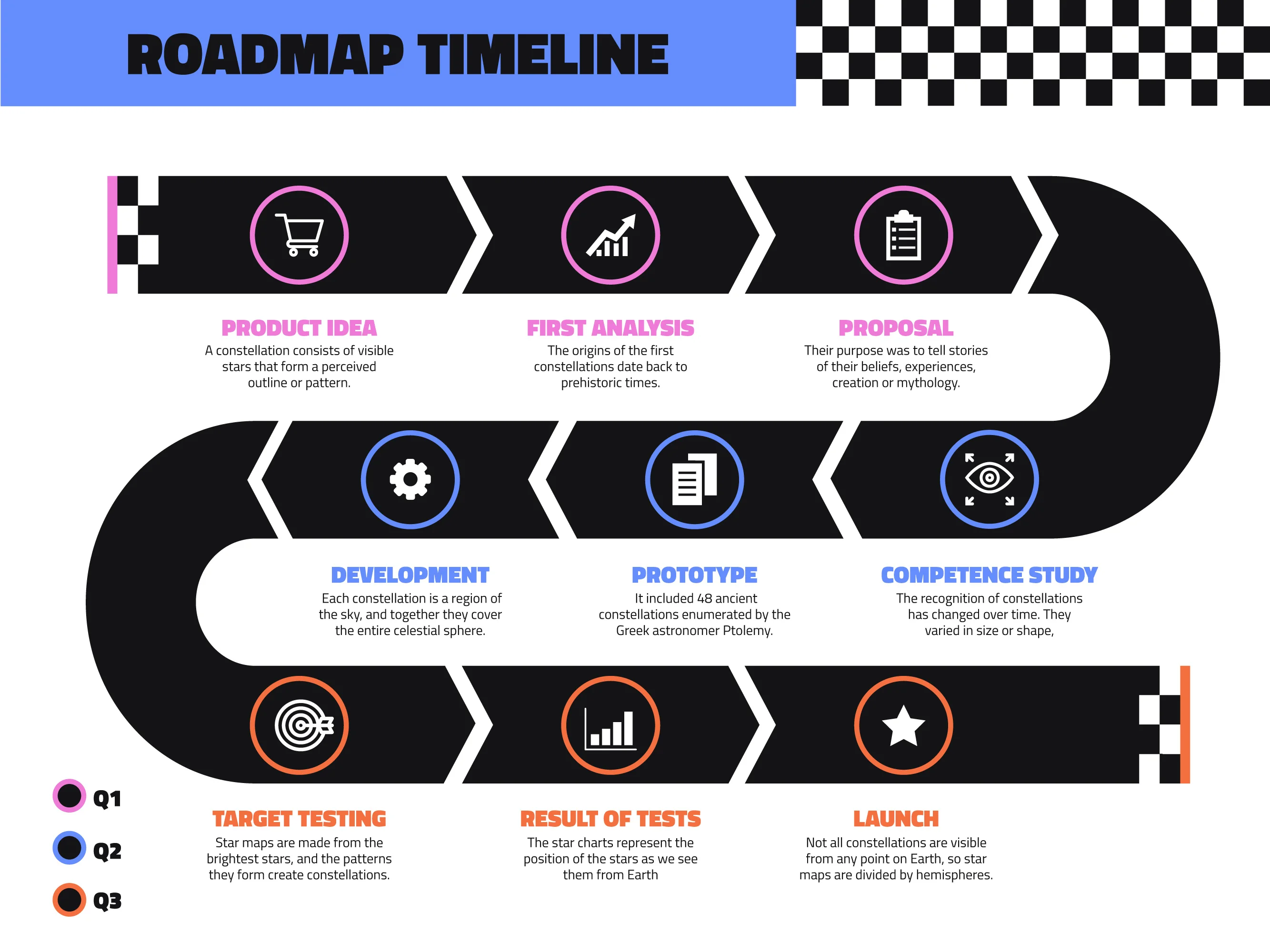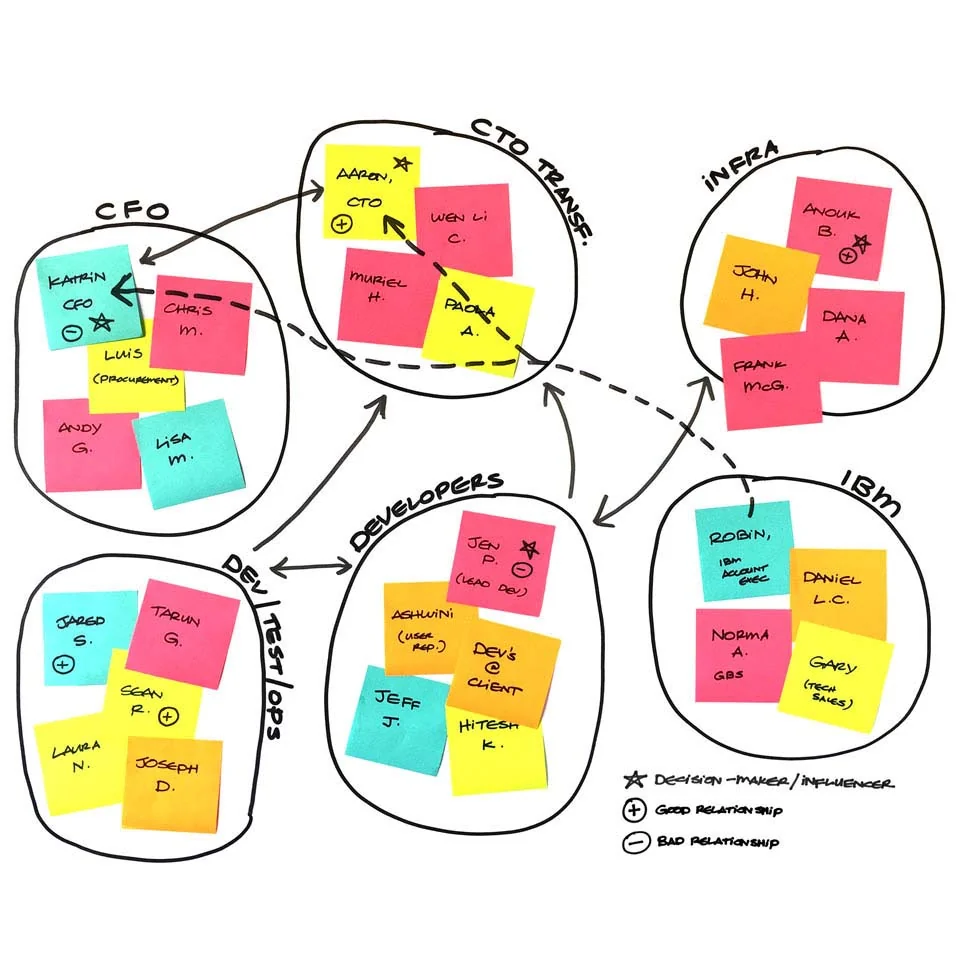What Is A Product Roadmap: Comprehensive Insights And Step-by-step Guide
Successfully creating and launching a product in 2023 requires a lot of planning and research. However, the process of finalizing everything can be an overwhelming experience for start-ups if they don't know how to approach the task. That's where a product roadmap comes into play. A well-crafted roadmap can be a powerful tool for keeping everyone on the team aligned, especially when changes occur. Product roadmaps maximize the chances of success and accelerate the timeframe for launching a successful product.
In this blog, we'll go through the elements of a product roadmap, how to start making one, and a few best practices to keep in mind. By the end, you'll have a comprehensive understanding of what goes into creating a product roadmap and how to use it.
Let's dive in!
What Is A Product Roadmap?
A product roadmap is a strategic plan that a product owner will use to guide product development and delivery over a specific timeline. The product roadmap process helps teams align activities with business goals and stakeholder needs. Some teams have a team-level product roadmap process, while others have a company-level process.

Product roadmaps can be used by all companies, from small start-ups to large corporations. It can benefit businesses at every stage of development, from conceptualization to launch. In addition to helping prioritize and plan development, a product roadmap can help companies stay up-to-date with new product features. Additionally, roadmaps prove to be a valuable asset for determining product functionality in terms of its long-term vision.
Ultimately, a product roadmap aims to define clear objectives and strategies that align all company departments towards the same goals for the product’s success. The audiences for a product roadmap are:
Product Owners
Product owners are responsible for ensuring the project manager’s plans for a product becomes a reality. Being that their main objective is to guide the development team throughout the stages of product development, having a roadmap enables them to pinpoint dependencies that teams must address to create a smooth flow during the creation process.
Product Managers
In comparison to the product owner, a product manager oversees the whole product management process. Their role takes on a middle-man character, wherein it’s their goal to make sure the product owner and their team stays on track towards meeting the goals and expectations of the business. With a product roadmap, product managers can easily see any discrepancies between the product owner’s progress versus the final outcome stakeholders have.
Developers/Engineers
A product roadmap gives developers a high-level overview of all activities related to a product's development. It gives them an understanding of which features need to be developed and when they should be completed.
Having a product roadmap to guide the development team gives them the ability to see the bigger picture and track where their work is going. As a result, developers can pinpoint where their efforts are needed most at specific product development milestones.
CEO/Executive Teams
Product roadmaps presented to CEOs and Executive teams need to highlight what product features and functionalities are being developed over time and the timeline for their completion. CEOs and executives also focus on how the product will impact the company's overall business strategy/positioning.
Additionally, CEOs and executive teams will want to know how much time, money, and resources spent in product development. The estimations laid out in the product roadmap, goes a long way in managing those expectations from a profitability point of view.
Sales, Customer Success and Other Customer-facing Teams
Customer-facing teams must be aware of the roadmap to address customer concerns accurately. They should understand what features and functionalities are available and in development and what is coming up in future releases.
Also, the sales team uses a product roadmap to express the product value by enhancing its visibility on marketing platforms. In that, being in sync with the long-term goals of the product lets them accurately depict what the user experience will be like.
Usually, product managers must create more than one version of a product roadmap based on who will review or analyze it. After all, each team within a company requires its own set of information to make the right decisions.
Elements Of A Product Roadmap
The elements of a product roadmap reflect its purpose. Which is to provide an overall vision of the product and its development objectives. However, it's best to iron out a few prerequisites before creating a roadmap, such as:
- Business Goals: It's essential to identify and define the company's overall business goals so that the product roadmap is created with them in mind. Exploring business plan examples can further illuminate effective strategies and approaches for achieving these goals.
- Target Audience/Customer Profile: Identifying the target audience for your product will help you stay focused on their needs as you create the roadmap.
- Competitive Analysis: It's important to analyze and understand the competitive landscape to differentiate your product from others and continue improving it.
- Budget: Knowing the product development budget ensures developers and their leads know where to allocate and prioritize their resources, be it tangible or intangible.
Once you have this information, you can develop the product roadmap. The following elements should be included in a product roadmap:
1. Product Vision
The product vision outlines the direction of the product and its purpose. To create the product vision, you'll need to incorporate the prerequisites listed above. Additionally, this section should outline the product's long-term objectives and how it will help fulfill your customer's needs and business goals.
A product roadmap vision should also outline the goals for a minimum viable product (MVP) as well as future features and products. It should provide a great overview of the product's direction and make it easier for stakeholders to understand what they are investing in. In effect, you'll have a vision set for a great product and a roadmapping process that stays on track.
2. Launch Strategy
Including a launch strategy in your product roadmap benefits customer-facing teams who interact with clients. Customers of a product will want to know when the product will be released, as well as how to use it once it's available. Additionally, customers invested in a product will want to know the potential for updates and improvements down the line.
Launch strategies should also include overviews on when a particular product feature or functionality will be released and its estimated completion date. This information is essential for informing stakeholders and customers of upcoming features or changes.
3. Product Requirements
Product requirements include aspects such as features, functionalities, and potential improvements. Product requirements should be organized to make it easy to understand and adapt as needed for different teams or stakeholders. The product requirements must always keep in mind the initial business objectives that prompted its development. Otherwise, your product development won’t be successful in implementation or launch.
Doing so streamlines the effort of outlining the end goal of the final product. Your product requirements can also outline the design architecture and technology. Including the design architecture benefits development teams who need to know the product's structure to begin creating it.
4. Key Milestones And Metrics
A product roadmap's key milestones are actionable items that, once completed, contribute to a particular goal. Key milestones should be listed in the roadmap and regularly monitored to determine how close the product is towards achieving its goals. Don't neglect to consider dependencies in outlining your milestones.
Dependencies are any features or functionality that must be in place before a milestone can be successfully completed. In roadmap creation, neglecting to account for dependencies leads to potential risks arising that impact the overall deliverability and success of product development.
Likewise, metrics are essential for tracking progress throughout the development cycle. Including metrics such as user activity or customer service satisfaction allows teams to measure the product's success. Together the milestones and metrics let product managers plot out the product's progress and see which areas need more attention or improvement.
5. Timeline Initiatives And Tasks
The timeline of a product roadmap outlines key events and tasks needed to bring the product vision to life. Each task should include a start date, an end date, and a description of its purpose. The timeline initiatives will help stakeholders understand what needs to be done for the product to launch successfully.
There are multiple ways to create your product roadmap's timeline, but the most popular is the Agile methodology. The agile roadmap is an iterative process that allows product teams to continuously adapt to changes and improve their product. An agile team begins by creating a product vision and then creates a roadmap that outlines the steps needed to achieve that vision. These steps are based on the prioritization of efforts and any backlog tasks that need addressing.
The benefit of the Agile methodology over other approaches is that it encourages collaboration between teams and stakeholders and an ongoing iteration to ensure customer satisfaction. Additionally, this approach helps create a timeline that can change as new information arises.
How to Create a Product Roadmap
Creating and maintaining a product roadmap can initially seem daunting, but it doesn't have to be. With the correct elements in place, you can develop a practical product roadmap that will help inform teams of progress and keep everyone organized.
All this information provides a comprehensive overview of the product you are building and how it will be released. From there, you can take the proper steps to create the best product roadmap based on audience needs.
Step 1: Define The Product's Goals
The first step in creating a product roadmap is to define the product's goals. Ask yourself what impact the product will have and determine how success will be measured. This will help define key metrics that should be tracked and give an overall direction for development. Defining product goals also means looking into the customer's perspective to understand what they need and how the product will solve problems effectively.
Step 2: Identify The Target Audience And Stakeholders

The next step is to identify your product's target audience and stakeholders. Who will be using or interacting with the product? What features are most important to them? This will help you determine what features should be prioritized and how to effectively communicate the product's value.
To answer those questions, product owners should apply the use of stakeholder maps, which is used by product owners to determine which resources are accessible to them and their team. Stakeholder maps are often used when issues arise to pinpoint who to approach in order to resolve the situation. In some cases, a stakeholder map is also referred to as an org chart, which also maps out and details the function and role of each individual within the organization.
In drafting this portion of your product roadmap, it is essential to keep it clear and concise so that you can stay focused on the most critical tasks. A product roadmap should include an overview description of each feature and a high-level summary of the timeline for development. Clearly defining these components prioritizes your efforts and ensures that you use your resources best.
Step 3: Map User Stories
Mapping out a product's user stories is an excellent tool for product teams to better understand their target audience. The process of mapping user stories helps understand the customer journey and how they interact with the product.
Additionally, it helps identify areas of improvement and allows teams to create user-friendly features that will make the product more successful. User stories should be short descriptions that include expected behavior, goals, and end results.
Step 4: Determine Product Features and Priorities
Using the information you've consolidated from previous steps, you can begin to determine the product features and their priorities. Identifying and prioritizing product features will help inform which tasks must be completed first for the product to reach its goals.
Prioritizing tasks and features also allows teams to focus their efforts on what matters most, ensuring that resources are used effectively. Based on the features and add-ons planned for development, product managers can start breaking down each task and assigning it to individual team members, streamlining the process with the assistance of an employee scheduling app.
Step 5: Categorize Tasks Into Sprints
Once you've developed a comprehensive list of features you plan to build, it's time to start organizing them into sprints. Sprints are short and focused bursts of development that create milestones for product teams.
Breaking down tasks into sprints helps teams stay on track and allows them to evaluate their progress. Sprint-based development also allows for more agility and adaptability as teams can quickly adjust to customer feedback or industry changes.
Step 6: Choose Roadmap Views
As mentioned earlier, product roadmaps need to cater for their flow and information based on the audience it is presented to. Roadmap views allow product teams to adjust the information and design of their roadmap based on who will be viewing it.
For example, suppose a C-level executive views the product roadmap. In that case, they may prefer a high-level summary with less technical detail. Different views can also help stakeholders have better visibility into development progress and better understand how tasks fit into the overall product plan.
Step 7: Monitor and Update Your Roadmap
Finally, monitoring and updating the product roadmap to communicate the product strategy and its progress periodically ensures it remains functional. Regular updates also ensure that stakeholders are aware of any changes or updates to the product development and the timeline for task completion.
Regularly revisiting the roadmap and making necessary adjustments helps teams stay focused on the ultimate goal of the product. A successful product roadmap should constantly evolve to keep up with changing technologies, customer needs, and company goals.
Types of Product Roadmap Dashboards
The product manager will create different dashboards or views of the same project information depending on the team's goals and objectives. Roadmaps geared towards stakeholder buy-in won't have the same details in each element as one geared towards initiating a product launch. These primary types of product roadmaps cater to different development needs:
I. Status-Oriented
A status-oriented product roadmap focuses on the current development process of a product. This type of roadmap provides an overview of tasks for completion, recent progress, and which are yet to be tackled. The status-oriented roadmap is best used for presenting to a team of developers and product owners looking to check in on the progress of their product.
II. Theme-Oriented
Theme-oriented roadmap templates provide an overview of the overall product lifecycle and highlight key themes and objectives. A theme-oriented product roadmap also directly focuses on upcoming product releases. It details which features will be included, when they will be released, and how they fit into the overall product plan. This type of roadmap is best used to provide a timeline for stakeholders for alignment purposes and goal monitoring.
III. Outcome-Oriented
Finally, an outcome-oriented product roadmap template focuses on the expected outcomes of new features or products. This roadmap provides an overview of how new features will help achieve the team's overall goals and objectives. Outcome-oriented roadmaps provide a clear direction and understanding of where a product should be heading and how it will benefit customers.
Best Practices For A Successful Product Roadmap
Whether you are creating an internal roadmap for the purpose of developing a product or an external roadmap to present to stakeholders, there are several best practices you should keep in mind.
- Keep It High Level: Keep the product roadmap high-level, focusing on key themes and objectives rather than detailed tasks. This will make it easier for stakeholders to understand and digest the information presented in the roadmap.
- Be Iterative: Iterative development is key when creating a successful product roadmap. This means updating your roadmap regularly with progress, changes, and improvements that have been made.
- Focus on Outcomes: When developing a product roadmap, focus on the outcomes that will be achieved by completing the tasks and objectives outlined in the roadmap. This helps stakeholders better understand how their efforts are leading up to achieving company goals.
- Involve Your Entire Team: Involving your entire team in developing and updating the product roadmap will help ensure that everyone is on the same page and working towards the same objectives.
By following these best practices, you can create a successful product roadmap that is both useful and easily understandable. With a clear plan in place, teams have the necessary tools to achieve success with their projects.
Conclusion
A product roadmap is a crucial part of any product development process. It helps teams stay organized and focused on their goals and provides visibility into the development progress. Incorporating the right elements and considering who will use the product roadmap contribute to its success.
Taking into account all the aspects of running a successful start-up, including creating a product roadmap, may seem like a lot. Luckily, Aloa has a handful of helpful resources to help you stay process-oriented in your approach to business success. Explore our website's guides and blogs to learn more about taking your business to the next level.

